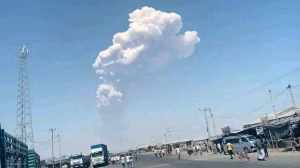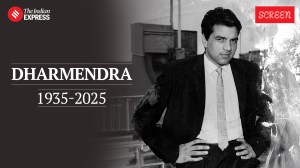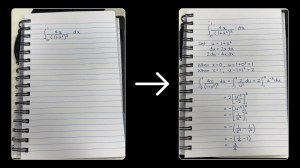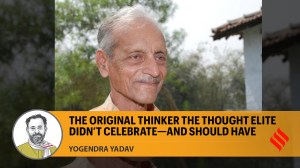In Dharavi, Sena to lend voice to ‘outsiders’
For all the Marathi manoos rhetoric the Shiv Sena has revived in the past few weeks, when the party’s executive president Uddhav Thackeray addresses a rally...

For all the Marathi manoos rhetoric the Shiv Sena has revived in the past few weeks, when the party’s executive president Uddhav Thackeray addresses a rally in Dharavi on Wednesday, it will be to assume leadership of a crusade that will mostly benefit those the party has termed “outsiders”—the migrant workers.
Dharavi is home to about 80,000 families and less than 35 per cent of them are Maharashtrians, according to initial estimates submitted to the state Government when the Rs 9,250-crore Dharavi Redevelopment Project was still on the drawing board. “There is no Marathi manoos issue here,” agrees former Sena MLA Baburao Mane, among the loudest dissenters of the project as currently designed. “We are seeking justice for the poor of Dharavi. We are burying all our differences of region and community.”
Local Shiv Sainiks expect one lakh people to gather this Wednesday. The demands: 400 sq ft homes handed out free of cost to all of Dharavi’s residents instead of 225 sq ft ones; the right to “self-redevelopment” for Kumbharwada and Koliwada; industrial galas for home industries too.
Dharavi, perhaps the most iconic migrant melting pot of them all, is home to people from Tamil Nadu, Andhra Pradesh, West Bengal, Uttar Pradesh and Bihar. The migrants also dominate the industries that the world’s most contentious slum is famed for—recycling, scrap, leather goods, tailoring, pottery, zari embroidery, manufacturing accessories and foodstuff.
Significantly, about 50 per cent of Dharavi’s people are Dalits and Muslims, whose local leaders have now joined the Sena’s initiative. Various party leaders, including the BJP, RPI and BSP, are believed to have visited Uddhav a month ago, entrusting him the task of leading the ragtag Dharavi confederacy of everybody from the Marxists to the right-wing activists.
Is the Sena back on the middle path, wherever necessary, as elections approach? “That’s not true,” insists Mane. “If we had to be thinking about elections, the unity we have forged among various parties would vanish.” But he admits it is a strong anti-Congress plank for the Opposition. MLAs from across the Opposition are readying to raise the issue simultaneously in Vidhan Bhavan on Wednesday.
Still, the Congress, for all the ill-will it is supposed to have earned in what has been a traditional stronghold for them, retained four of the six corporator seats within the slum in municipal elections in February 2007. The Shiv Sena, the original designer of the state’s slum rehabilitation scheme, has been stoking protests against the project for over a year now. In June and then in August 2007, they drew a sizeable number of people to participate in demonstrations, once led by Member of Parliament Manohar Joshi.
Government officials confirm that surveyors appointed by Mashal, the Pune-based organisation conducting a biometrics-based Baseline Socio-Economic Survey of every household in the 144-hectare project area—the size of six Nariman Points, termed “some of India’s hottest real estate” by the National
Geographic magazine—were threatened in February. For nearly a week, work was halted. The survey resumed later, only to have Sena activists force it shut once again.






- 015 hours ago
- 0214 hours ago
- 0315 hours ago
- 045 hours ago
- 0514 hours ago

























